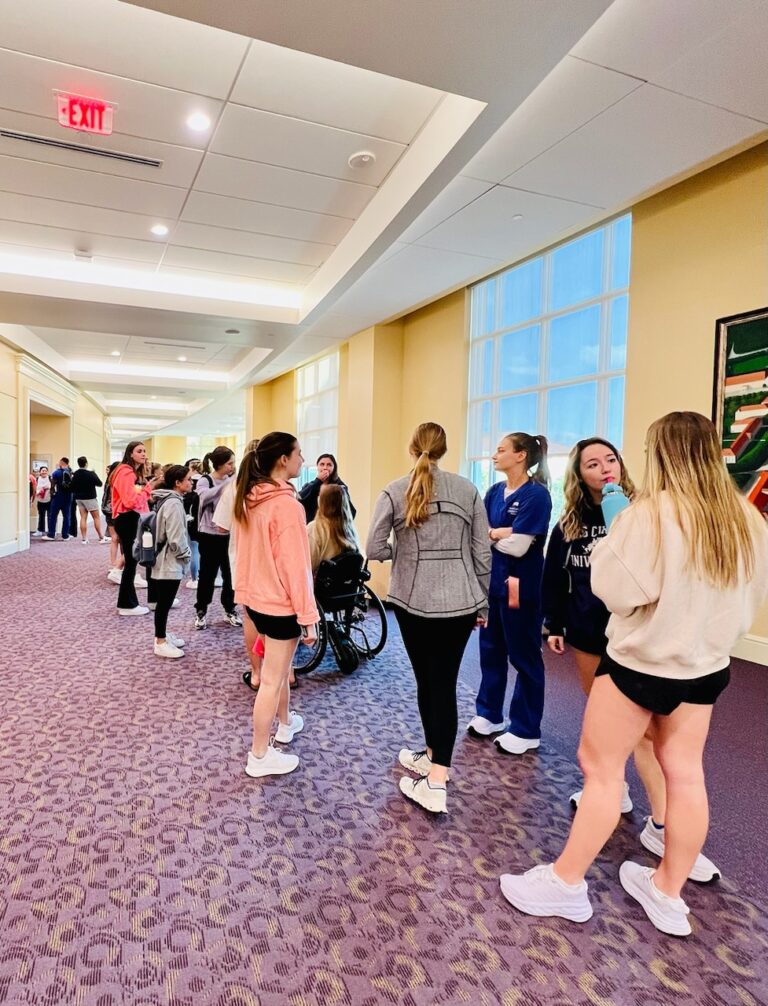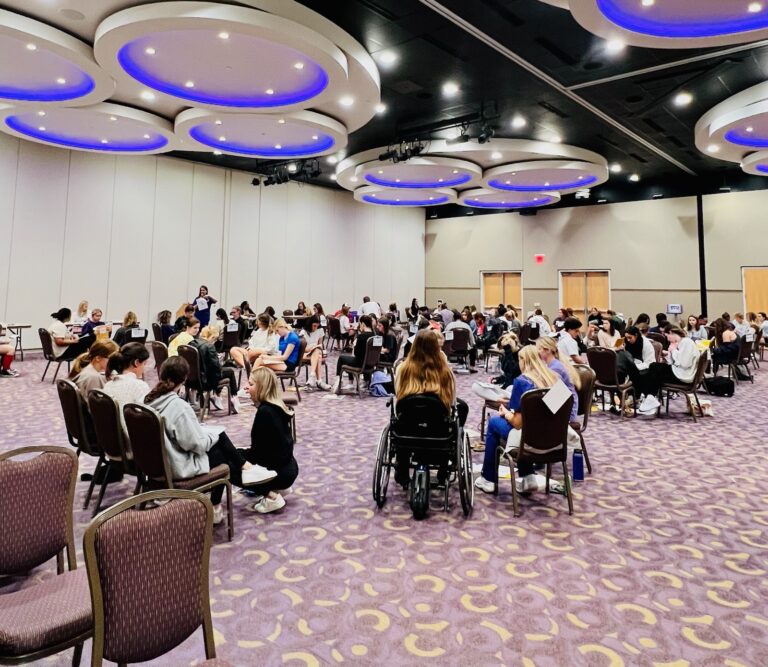
Harris College students recently became sensitized to the day-to-day realities of life faced by people with low incomes through a poverty simulation. The experiment offered students an opportunity to consider how working within interprofessional and interdisciplinary teams might help them to deal more effectively with people living in poverty. The three-hour simulation demonstrated what it’s like to be part of a low-income family surviving month to month. Students were assigned to a family unit and provided with identification documents, possession, sources of income, bills and various other items needed to survive the “month.”
Facilitators reinforced the fact that the experiment was a simulation, not a game. Poverty is not a game for the over 38.1 million people living in poverty, US citizens whose lifestyles were simulated.
- Poverty for a family of four means having an income below $25,780
- 6% of men and 12.9% of women are living in poverty in the US
Participants were asked to be as realistic as possible about their role by thinking like a person facing poverty would think and act like the age and position assigned to them. Here are some of their experiences.
Autumn Henry
Social Work undergraduate student
I try to approach every situation with an open mind to avoid being impacted by bias, both from others and my own. I soon realized that poverty is a part of my story. This experience triggered certain memories for me, and I was amazed at the amount of support I received. Some of the participants in my assigned family unit had also experienced poverty in their own lives, so their views and efforts in the simulation were impactful. Poverty is a real thing and I believe that we all should learn how to better serve our community, and this simulation allowed space for this reality to be exposed. T
There are more “real-life” people who are living in poverty and who’ve overcome poverty than I thought. It wasn’t until this simulation that I realized how many people don’t truly know the facts of life in poverty. At the same time, I was glad because many were ready to learn.
Those living in poverty are people just like you and me, and the stigmas surrounding poverty like gun violence, drugs and homelessness need to be broken.
I was homeless, at least four times, as a child and in more recently, in 2016. It was not a choice that I made, but an outcome of a situation. I wanted to work and attend school but lacked the resources and support. It was not until I was connected to some of the same resources from the simulation that I was able to find stable housing and work and return to being a productive member of society. My story puts me here today because someone cared and took the time to listen and walk with me through the challenges of life. I recommend all students take the time to really listen to one another and not judge because, at any moment, it could be them in the same situation. I am very grateful I was able to participate in this simulation and I encourage everyone to take the time to be trauma-informed, especially in the fields we’ve chosen to work. The opposite of homelessness is a connection! Once we understand this, there can be action.

The social, economic, and environmental conditions that people live in can have detrimental health effects such as higher rates of chronic diseases, communicable illnesses, health risk behaviors, and premature mortality. People living in poverty often are not empowered to speak up or are unable to take any action which results in worsening health living conditions over generations. The health of individuals living in poverty poses greater challenges from policy, practice, and research standpoints. After participating in this simulation, I believe we will all be uniquely poised to be advocates for individuals who are marginalized and disenfranchised.
Stephanie Jevas
Director of the Athletic Training Program and Professor of Professional Practice in Kinesiology
I became involved with the poverty simulation a few years ago through my work with interprofessional education. In our athletic training curriculum, we teach our students about social determinants of health and how personal and environmental factors can influence patient outcomes. It is so important for our students to be able to recognize these factors when working in various athletic training settings.
In my first experience with the poverty simulation, I was placed in a family unit. I took on the role of a grandmother whose husband was on disability, and we were caring for our daughter’s two children. Though I was earning a weekly income, there were weeks that we never bought groceries or picked up needed medications. We had no idea what services were available to us.
It was very eye-opening to see how challenging it can be to navigate the system.
My participation in the simulation gave me a deeper understanding and appreciation of what our patients may encounter. I developed an assignment for our students where they reflect on their experiences from the poverty simulation and the challenges they faced in their family units. Students also must identify social factors that their family encountered that may affect patient care and outcomes such as educational limitations, family care demands, food insecurity, and poor or unstable living conditions to name a few. Finally, they must find resources for a patient and discuss how these resources may improve the health outcomes of their patient. Finally, identify what other professions can they utilize to help coordinate resources for their patient.
We feel it is important for students to reflect on this valuable experience, but also think about it from a health care provider lens and how this experience can help them in their professional practice.
To encourage students to let go of the stigma surrounding homelessness, I tell my students how important it is to see our patients as individuals—they shouldn’t be labeled as an ankle sprain or shoulder injury—they are so much more. We must take the time to understand our patient’s situation and how can we help navigate any challenges they may be having—nutrition, transportation, insurance, etc. If we don’t, we will never see the outcomes we are expecting. We are in a people profession, and we must make the whole patient a priority.

I believe one of the biggest impacts students can make right now is through volunteer activities. I have done volunteer work with students at Union Gospel Mission where we have hosted parties for the kids for both Halloween and Valentine’s Day. They have other opportunities such as tutoring and helping with food services. It is such a rewarding way to serve and make a difference.
This was the first year that a larger total number of students was attempted. Last spring’s simulation had approximately 70 students, this year, there were over 150 students over both nights. The experience was executed over two nights and could not have happened without the faculty and volunteers.